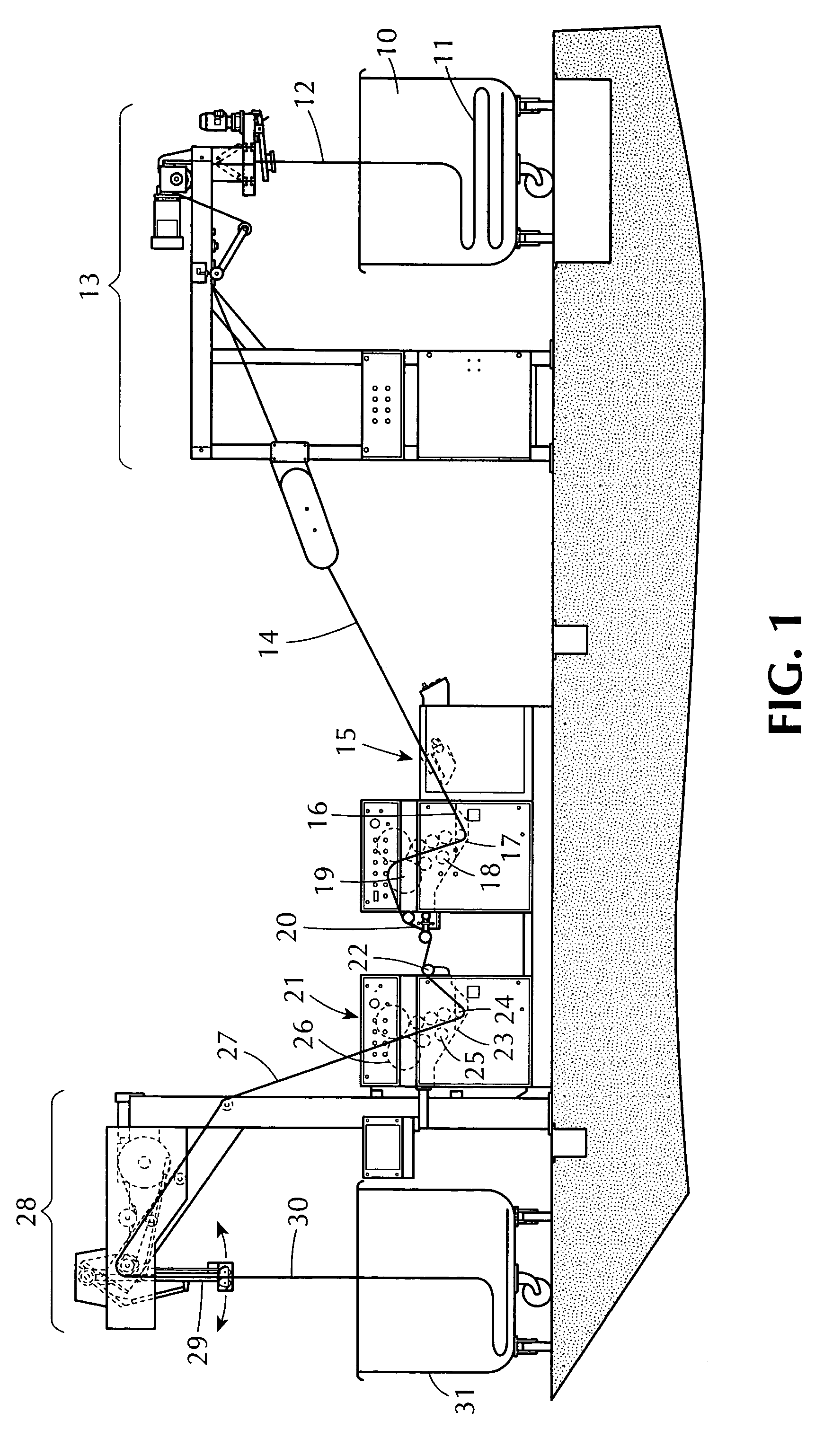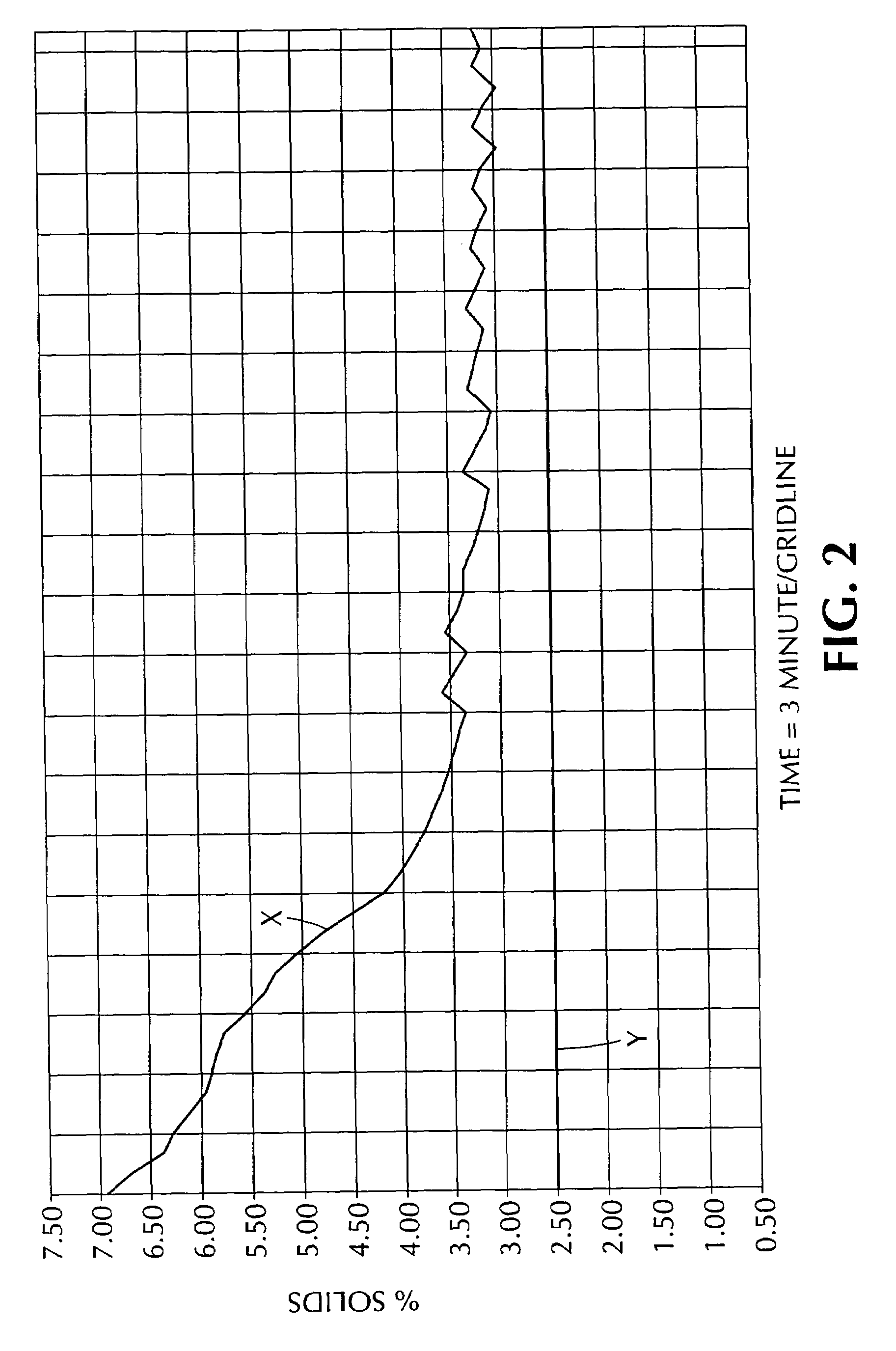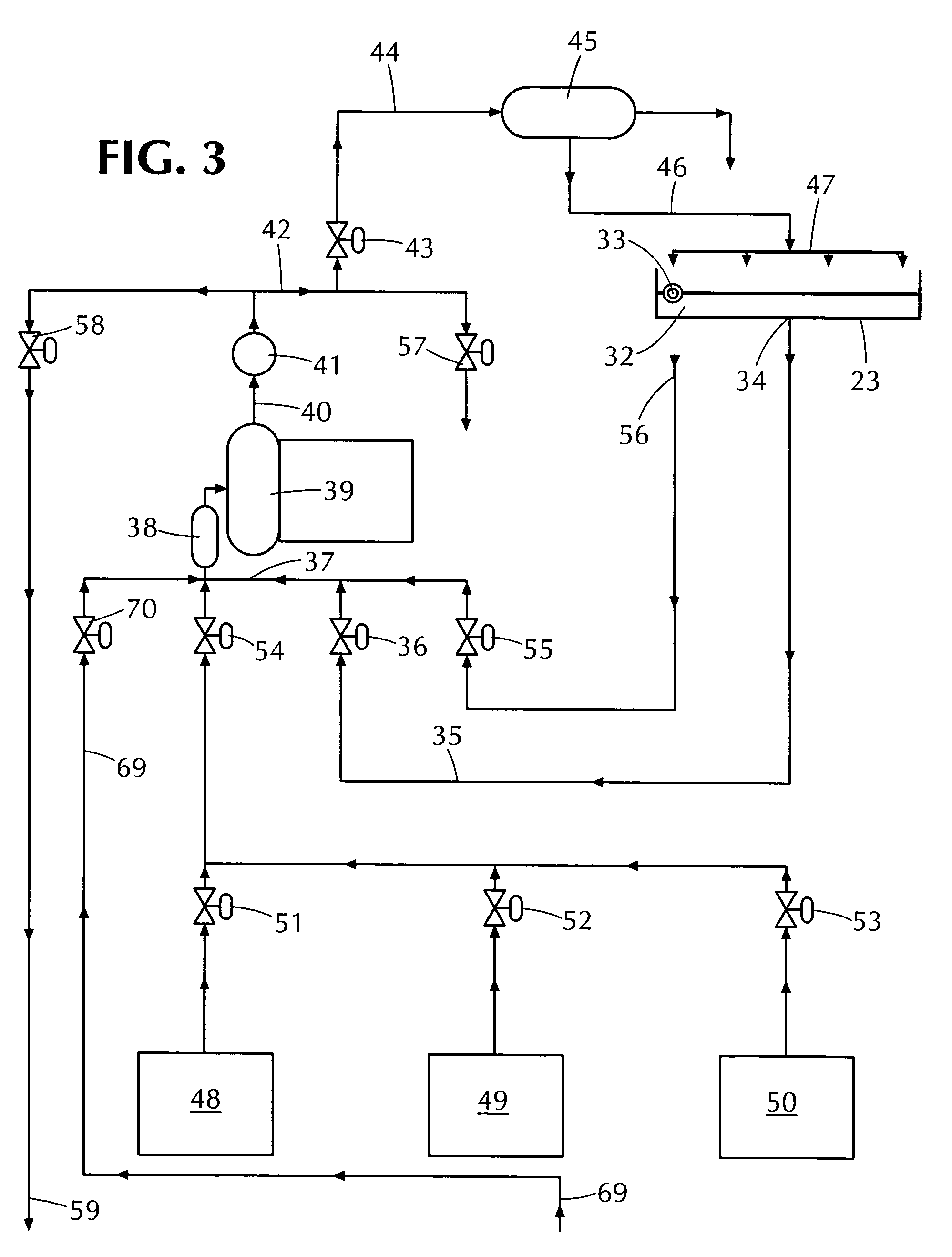[0009]An additional advantage of the invention is derived from the fact that certain procedures, which are now performed on a wet-on-dry basis, because of difficulty in performing them with conventional wet-on-wet procedures, can now be performed to significant advantages as wet-on-wet procedures. Among other things, this saves the cost and time of performing an intermediate drying step on the fabric, prior to performing wet-on-dry chemical processing. Additionally, both fabric strength and shrinkage are improved with wet-on-wet application, as compared to wet-on-dry processing.
[0010]The present invention is directed to a novel and improved apparatus and process for controlling processing solutions with an exceptionally high level of accuracy. The invention is uniquely advantageous in connection with the wet-on-wet processing of fabrics, but is not necessarily limited thereto. The apparatus and procedure of the invention, in broadest context, involves the mixing and controlling of a processing solution during a consumptive use of the processing solution, on a “mix-on-demand” basis, such that the components of the processing solution are introduced only as and to the extent needed, and on a precision basis. The arrangement, according to the invention, is such that the processing solution is controlled with a high degree of precision throughout the consumptive use thereof, allowing the chemical usage to be kept at an absolute minimum for the processing requirements.
[0011]In a particularly preferred embodiment of the invention, for the application of processing chemical on a continuous basis to a moving fabric web, the processing solution is continuously controlled with a high level of precision to assure that the fabric is properly treated throughout with the chemical solution. At the same time the process of the invention avoids the need for overapplication of chemicals otherwise required to accommodate an initial equilibrium period and / or to provide for a “factor of safety” to accommodate process variables. Because the procedure of the invention enables the fabric processing to be carried out with a high level of precision in the control of the processing solution, the usual processing variables are reduced to insignificance, and applying extra chemicals to achieve a factor of safety can be minimized to an insignificant level.
[0012]In a preferred process according to the invention, previously wet-out fabric is guided through a solution pan containing a quantity of a chemical processing solution, such as a fabric softener or soil release chemical, for example. Desirably, the solution pan is quite small in relation to the required size of a solution pan used in conventional processing. For example, in a typical line for processing tubular knitted fabric of about 26 inch width, a pan of 3.5-5 gallon solution capacity is preferably utilized, as compared to solution pans of 10-13 gallons capacity which are more commonly utilized for conventional processing. For some processes, such as treating wide, open width fabrics, the solution pan may be much larger than 3.5-5 gallons. Nevertheless, for the processing of comparable fabrics, the solution pan used in the process of the invention typically and desirably is significantly smaller than that required for conventional processing
[0013]During processing of the fabric, wet fabric enters the solution bath and typically passes through a series of rollers to assure a uniform penetration of the fabric by the processing solution. As the fabric exits the solution pan, it passes through a pair of extraction rollers that remove excess liquid, allowing it to flow back into the solution pan. While the processing of the fabric continues, the processing solution contained in the solution pan is rapidly and continuously recirculated and its composition tested so as to detect any changes in the concentration of processing chemical. Preferably, the total content of the solution pan is completely recirculated multiple times per minute. During the continuous recirculation, the solution is exposed to an in-line sensor, which accurately measures the content of processing chemical in the stream of recirculating solution. The recirculating stream is sensed rapidly and repetitively, for example, about once every second. Any time the sensor senses the solution to be out of specification, a small amount of a needed component is injected into the flowing system and immediately thoroughly mixed therewith. Because of the high rate of recirculation of the solution, and the high speed, repetitive monitoring and correcting of the solution, it is possible to maintain the solution within an extremely low tolerance range above or below a desired set point throughout the entire fabric processing.
[0014]The new process is able to assure with a high degree of certainty that the fabric will be uniformly penetrated by a desired level of the process chemical without requiring the chemical to be overapplied in significant amounts as has been required with conventional processing.
 Login to View More
Login to View More 


